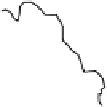Geography Reference
In-Depth Information
Fig. 3.22
Distribution of donors of crops, 1995 (Kanamura offi ce)
districts in Tsukuba, including the
Ujiko
region, Kanagawa Prefecture, Central
Tokyo, and Tochigi (located in the nearest or outer zone of the
Kanamura
catch-
ment area) visited in winter.
The next most popular visiting period was autumn (September to November;
279 visitors, 27 %) followed by spring (March to May; 196, 19 %), and summer
(June to August; 61 5.8 %). Many believers who visited
Kanamura
in the
autumn lived in the vicinity. For example, 74 came from Mitsukaido; 47, from
Iwai; 38, from Toyosato district in Tsukuba, and 38, from Ishige town. The larg-
est number of believers who visited in spring (26) came from Iwai, followed by
25 from Mitsukaido, 22 from Toyosato district in Tsukuba, and 19 from Ina
town. Believers who went to
Kanamura
in spring or autumn usually timed their
visit for the festival. Some believers went to
Kanamura
as delegated visitors of
daidai-ko
or
dantai
-
ko.
Judging by the content of the prayers, summer believers
sought protection from lightning, although fewer people visited in this season.
Believers were distributed on the fringe of the catchment area, such as in Misato,
Sekiyado town, and Sashima town.
Figure
3.22
shows the distribution of crop donors.
12
Crop donations express
prayer for bumper crops or for gratitude. Most donations were polished rice;
other gifts included turnips, bamboo shoots, or eggs, because people believe the
kami
of
Kanamura
favors bamboo shoots and eggs. There were 232 persons










































































Search WWH ::

Custom Search